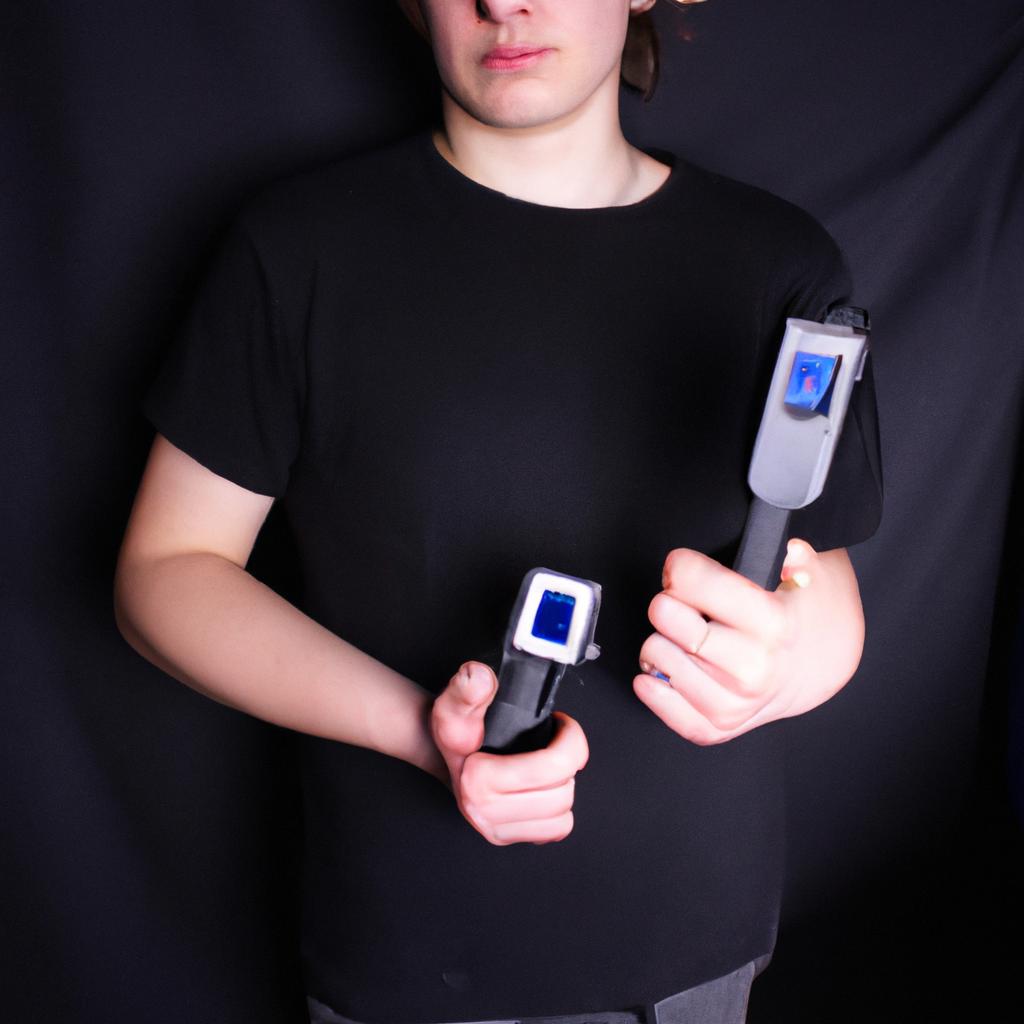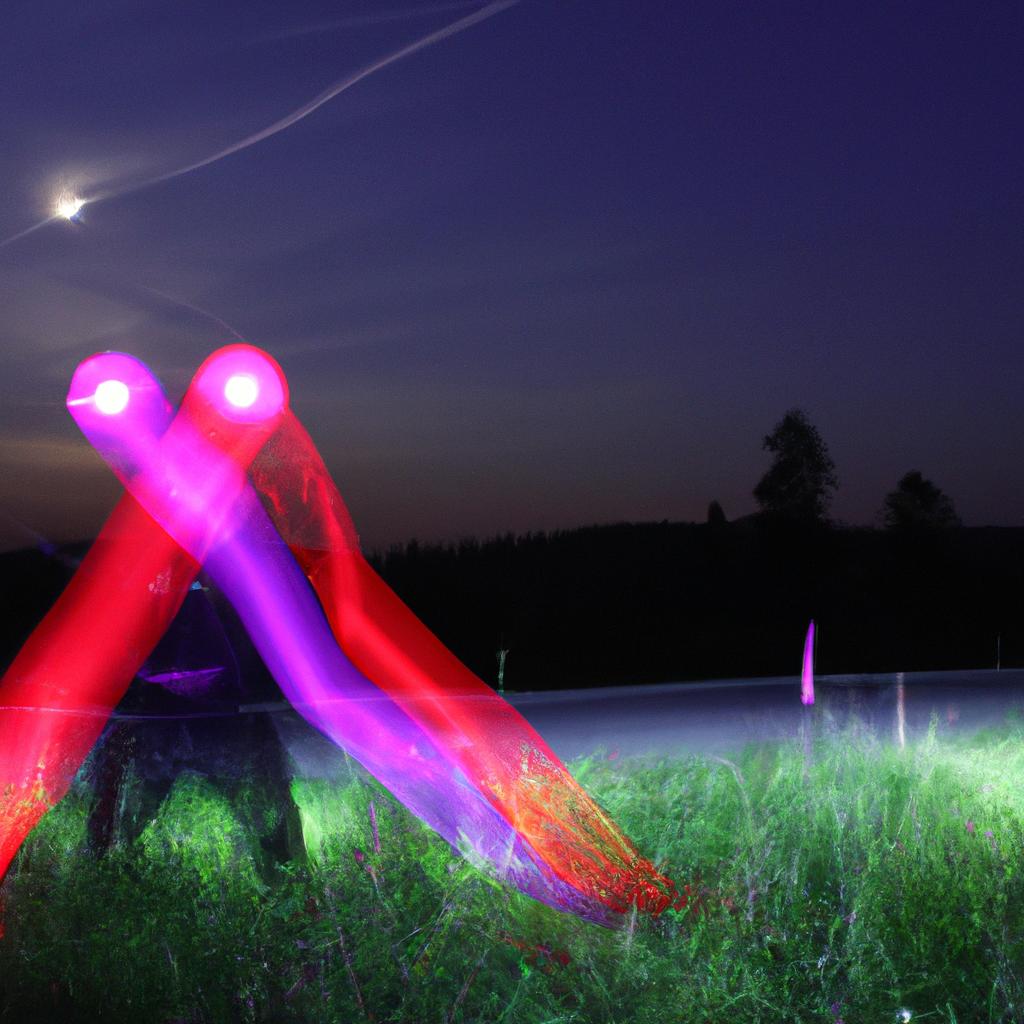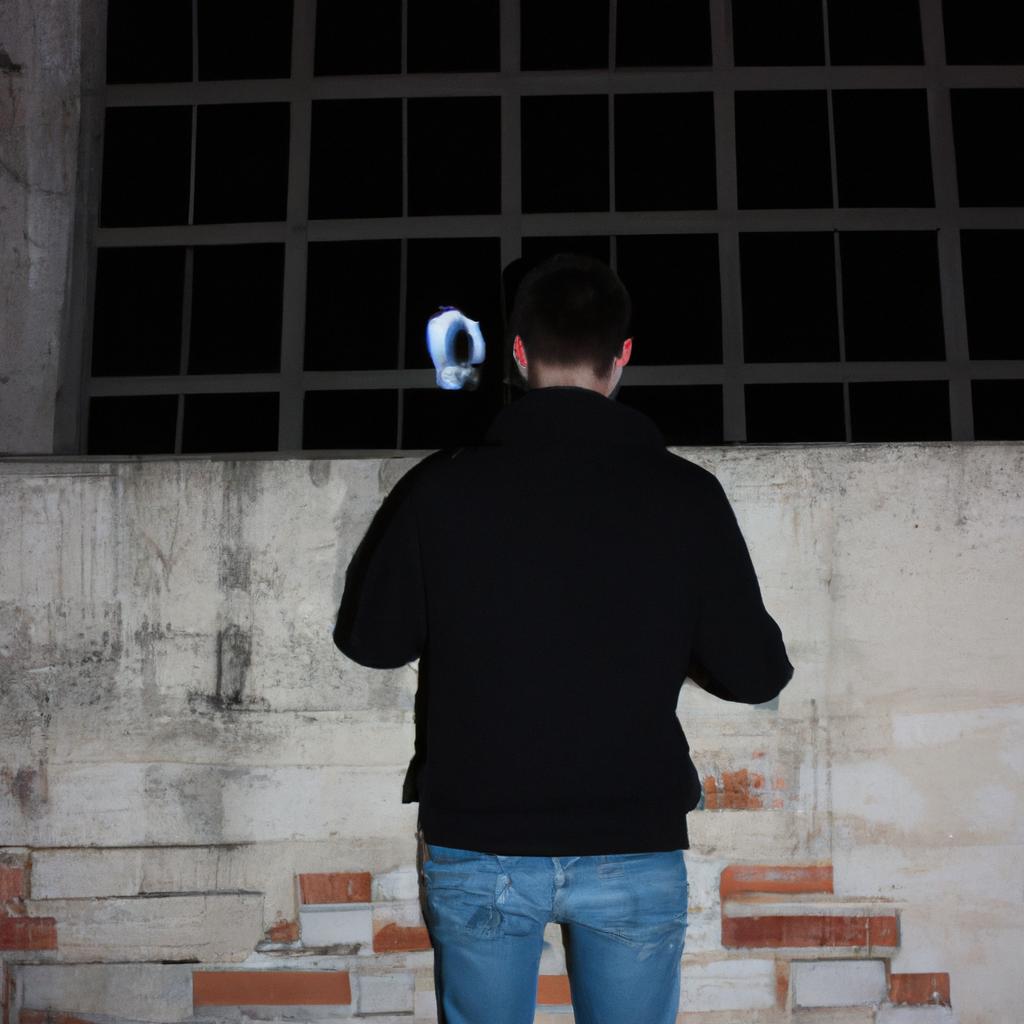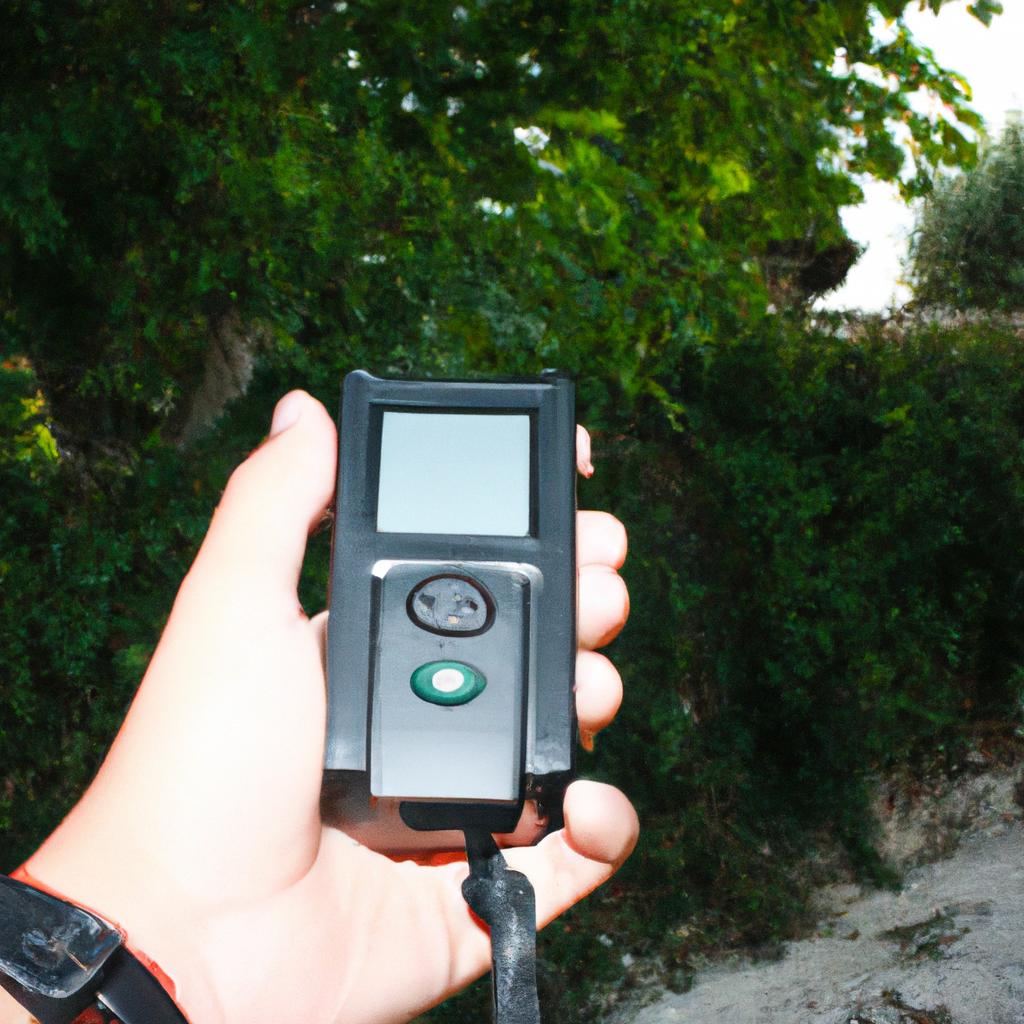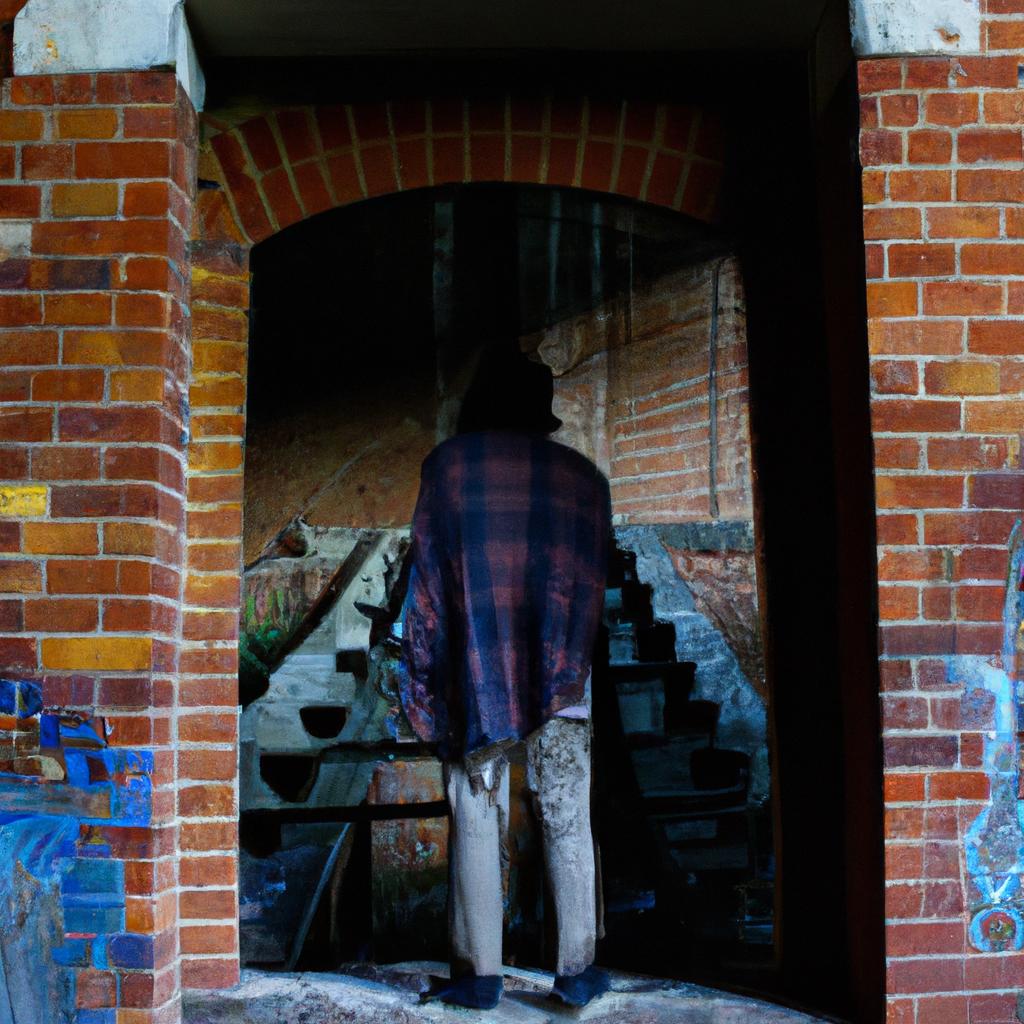Poltergeist Activity Unleashed: Ghostly Encounters in the Realm of the Paranormal
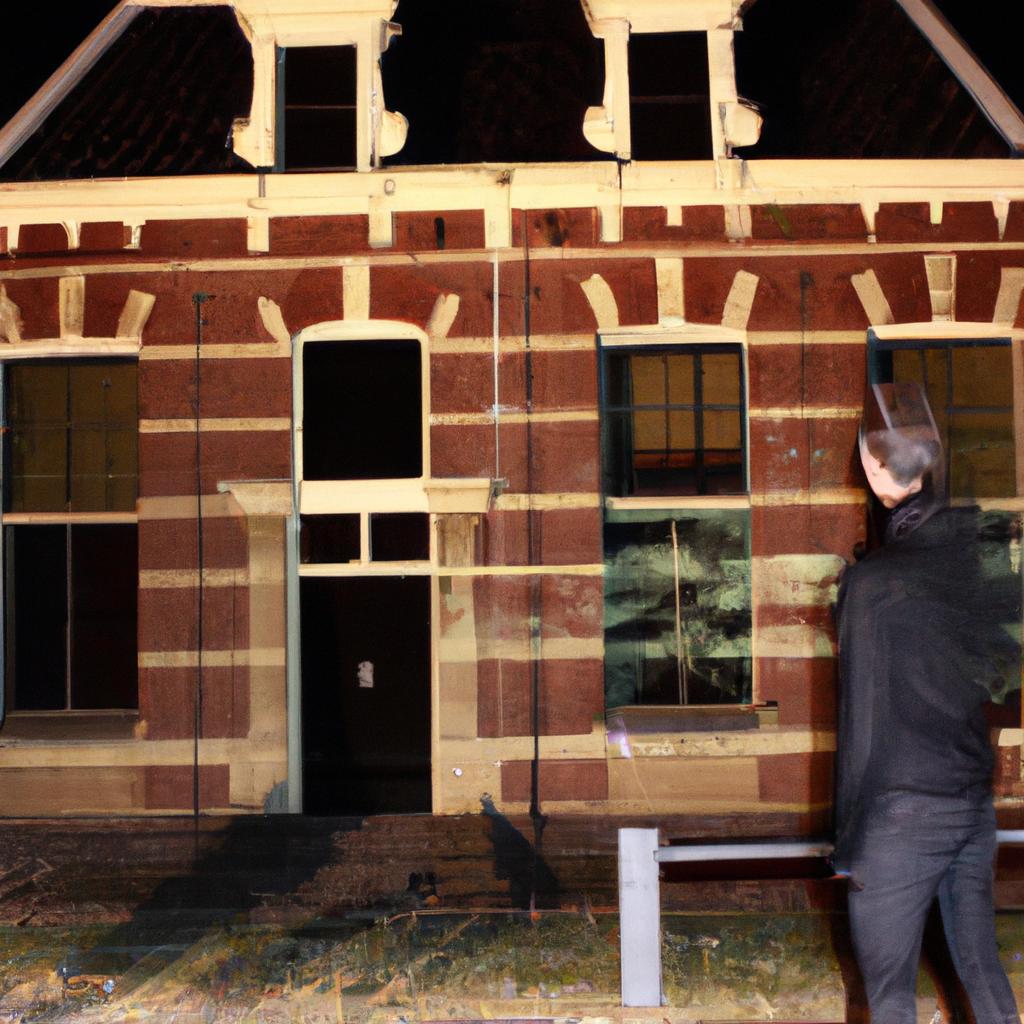
Poltergeist Activity Unleashed: Ghostly Encounters in the Realm of the Paranormal
The realm of the paranormal has long fascinated and perplexed individuals across cultures and centuries. One particularly intriguing phenomenon within this domain is that of poltergeist activity, characterized by unexplained disturbances such as objects moving seemingly on their own, inexplicable noises, and even physical attacks. These encounters have been reported throughout history, leaving many to ponder what may lie beyond our known world.
Consider the case study of the Smith family from a small town in rural England. For several weeks, they experienced a series of bizarre occurrences within their home – furniture being overturned without any apparent cause, doors slamming shut with great force, and disembodied voices echoing through empty rooms. Seeking answers to these eerie events, they called upon paranormal investigators who meticulously documented each incident. The evidence gathered left them astounded; conventional explanations seemed insufficient to account for the intensity and complexity of the phenomena witnessed by both residents and investigators alike.
This article delves into the enigmatic nature of poltergeist activity, exploring its historical roots, theories surrounding its occurrence, and potential explanations offered by experts in the field. By examining various accounts throughout time and across different cultural contexts, we aim to unravel some of the mysteries surrounding poltergeist activity and shed light on its possible origins.
One prevailing theory suggests that poltergeist activity may be linked to psychokinesis, a phenomenon in which individuals unknowingly manipulate objects with their minds. It is believed that heightened emotional states, particularly during adolescence, can trigger these unconscious bursts of telekinetic energy. This theory aligns with many reported cases where poltergeist activity coincides with the presence of young individuals experiencing significant emotional turmoil.
Another explanation posits that poltergeists are not actually spirits or ghosts, but rather manifestations of the subconscious mind. According to this theory, individuals experiencing high levels of stress or repressed emotions project their inner turmoil onto their surroundings, resulting in seemingly supernatural occurrences. This notion finds support in cases where poltergeist activity ceases once the underlying psychological issues are addressed.
Alternatively, some researchers propose that certain environmental factors such as electromagnetic fields or infrasound – low-frequency sounds below the threshold of human hearing – may play a role in triggering poltergeist phenomena. These factors could potentially disrupt brain function and induce hallucinations or altered perceptions, leading individuals to believe they are witnessing paranormal events.
While these theories provide plausible explanations for some aspects of poltergeist activity, they fail to account for all reported phenomena. The nature of these encounters remains elusive and continues to confound both skeptics and believers alike.
In conclusion, the realm of poltergeist activity presents us with an enduring mystery that defies easy explanation. Whether stemming from psychokinesis, repressed emotions, environmental factors, or a combination thereof, these ghostly encounters continue to captivate our imaginations and challenge our understanding of the world beyond what we can perceive. As long as unexplained occurrences persist and new case studies emerge, the study of poltergeists will remain a frontier ripe for exploration by those curious enough to venture into the realm of the paranormal.
The History of Poltergeist Phenomenon
Poltergeist activity, characterized by unexplained disturbances and objects moving seemingly on their own accord, has fascinated and perplexed individuals for centuries. One notable example is the case study conducted in 1967 at a small farmhouse in Enfield, England. The Hodgson family reported numerous incidents of furniture being thrown, objects levitating, and strange knocking sounds echoing throughout their home. This captivating account not only captured public attention but also sparked scientific interest in understanding this elusive phenomenon.
To comprehend the history of poltergeist activity, it is crucial to examine its origins dating back to ancient times. Folklore from various cultures recounts tales of mischievous spirits or demons causing chaos within households. However, it was during the late 19th century that poltergeists began to receive scholarly attention as psychologists and parapsychologists sought to explain these supernatural occurrences through scientific means.
Throughout history, several key observations have been made regarding poltergeist phenomena:
- Spontaneous Manifestations: Poltergeist activity often manifests unexpectedly without any apparent triggering event.
- Physical Interactions: These entities demonstrate an ability to manipulate physical objects such as throwing items or causing them to move inexplicably.
- Auditory Disturbances: Witnesses frequently report hearing loud banging noises or disembodied voices associated with poltergeist encounters.
- Psychological Impact: Individuals residing in homes experiencing poltergeist activity commonly exhibit heightened levels of fear, anxiety, and distress.
In examining the historical records surrounding poltergeists, one can discern recurring patterns across diverse cultural contexts. By systematically documenting these occurrences over time, researchers hope to unravel the mysteries behind this paranormal enigma.
Transitioning into the subsequent section exploring “Types of Poltergeist Activity,” we delve deeper into investigating the varying manifestations observed during encounters with these elusive entities.
Types of Poltergeist Activity
Unleashing chaos and fear upon unsuspecting individuals, poltergeist activity has long captivated the interest of paranormal enthusiasts. As we delve further into this enigmatic realm, it is crucial to explore the different types of poltergeist activity that have been reported throughout history. One such example involves a family in England who claimed to experience unexplained phenomena like objects moving on their own and mysterious knocking sounds echoing through their home.
When examining the various manifestations of poltergeist activity, it becomes evident that they can differ greatly from one another. While some cases involve only minor disturbances like flickering lights or cold spots, others escalate into more intense encounters with physical harm or violent interactions. Understanding these variations helps shed light on the complexity and diversity of these ghostly occurrences.
To better comprehend the range of experiences associated with poltergeists, consider the following emotional responses commonly reported by those affected:
- Fear: The presence of an unseen entity often instills fear and anxiety in individuals living within haunted spaces.
- Confusion: Unexplained happenings challenge our rational understanding, leaving us perplexed and searching for answers.
- Helplessness: In situations where malevolent entities exert control over their environment, victims may feel powerless against these forces.
- Intrigue: Despite the unsettling nature of poltergeist activity, many are fascinated by its mysteries and seek to uncover its secrets.
In addition to exploring emotions tied to these encounters, a closer examination reveals certain patterns recurring across multiple cases. Here is a table highlighting four key characteristics commonly associated with poltergeist activity:
| Characteristics | Description |
|---|---|
| Object Manipulation | Physical movements of objects without any apparent cause |
| Auditory Disturbances | Strange noises such as footsteps or banging coming from unknown sources |
| Electrical Interference | Disruptions in electrical devices or fluctuations in power supply |
| Personal Attacks | Cases involving physical assault, scratches, or other forms of harm |
As we continue our exploration into the world of poltergeist activity, it becomes clear that these encounters are not confined to a specific time or location. In fact, famous cases throughout history have left an indelible mark on society and continue to fascinate researchers today. From the Enfield Poltergeist case in England during the 1970s to the Bell Witch haunting in early nineteenth-century Tennessee, each instance offers unique insights into this perplexing phenomenon.
Transitioning seamlessly into our next section about “Famous Poltergeist Cases,” let us now delve into some notable instances where poltergeists unleashed their wrath upon unsuspecting victims.
Famous Poltergeist Cases
Unleashing a torrent of supernatural phenomena, poltergeist activity remains one of the most intriguing and perplexing areas within the realm of the paranormal. These ghostly encounters often manifest in ways that defy logic and challenge our understanding of the natural world. As we delve deeper into this enigmatic phenomenon, it becomes apparent that there are various types of poltergeist activity, each characterized by distinct characteristics and manifestations.
One example of poltergeist activity involves objects being inexplicably moved or thrown across a room with great force. In one chilling case study, a family reported witnessing their furniture levitate before violently crashing back down to the ground. Such incidents not only instill fear but also leave individuals questioning their own sanity as they struggle to comprehend these unexplained occurrences.
To shed light on the different facets of poltergeist activity, here is a breakdown of some common types:
- Object Manipulation: Poltergeists have been known to manipulate physical objects, causing them to move without any discernible human intervention.
- Auditory Disturbances: Haunting sounds such as disembodied voices, footsteps, or unexplained knocks are frequently associated with poltergeist activity.
- Physical Assaults: Individuals experiencing poltergeist phenomena may be subjected to scratches, bites, or even more severe forms of physical aggression.
- Electrical Interference: Poltergeists often disrupt electrical systems and appliances, leading to flickering lights, malfunctioning electronics, and sudden power outages.
In order to further explore the intricacies surrounding poltergeist activity, let us now turn our attention towards some famous cases that have captivated both believers and skeptics alike. By examining these renowned instances throughout history, we can gain valuable insights into this mystifying phenomenon and perhaps uncover clues about its origins and nature.
Transitioning seamlessly into the next section about “Theories and Explanations for Poltergeist Activity,” we embark upon an exploration of the possible underlying factors that may contribute to these unsettling encounters. Through a comprehensive examination of scientific, psychological, and paranormal theories, we aim to unravel the mysteries surrounding poltergeist activity and shed light on this fascinating subject matter.
Theories and Explanations for Poltergeist Activity
Uncovering the mysterious occurrences behind poltergeist activity has fascinated both paranormal enthusiasts and skeptics alike. While these phenomena continue to perplex researchers, various theories and explanations have been proposed to shed light on this unexplained phenomenon. In this section, we will delve into some of the most prominent theories surrounding poltergeist activity.
One example that highlights the enigmatic nature of poltergeist activity is the infamous Rosenheim Poltergeist case in Germany. In this instance, a law firm experienced relentless disturbances such as flying objects, flickering lights, and unexplainable temperature fluctuations. Despite extensive investigations by parapsychologists and physicists, no rational explanation could be found for the inexplicable events plaguing the location.
To better understand the possible reasons behind such occurrences, it is crucial to explore different theories associated with poltergeist activity:
- Psychic Influence: This theory suggests that certain individuals possess latent psychic abilities that unknowingly manifest during times of emotional stress or puberty. These psychokinetic episodes result in heightened electromagnetic energy and can lead to poltergeist-like disturbances.
- Residual Energy: According to this notion, traumatic or emotionally charged events leave an imprint on the environment known as residual energy. These imprints can become activated under specific circumstances, causing seemingly supernatural phenomena.
- Spirit Entities: Believers in the spirit realm assert that poltergeists are actually disembodied entities seeking attention or attempting communication through physical manifestations.
- Psychological Manifestation: Some psychologists propose that poltergeist cases may stem from repressed emotions or psychological turmoil within individuals experiencing high levels of stress or trauma.
To further illustrate these theories’ impact on understanding poltergeist encounters, let’s examine a table showcasing their key features:
| Theory | Explanation |
|---|---|
| Psychic Influence | Individuals with latent psychic abilities unconsciously manipulate their surroundings |
| Residual Energy | Emotional imprints on the environment activate and cause poltergeist-like disturbances |
| Spirit Entities | Disembodied beings seek attention or attempt communication through physical manifestations |
| Psychological Manifestation | Repressed emotions or psychological turmoil manifest as supernatural phenomena during high-stress periods |
As we explore these theories, it is essential to approach them with an open mind while considering other potential explanations for poltergeist activity. The complexities surrounding this phenomenon challenge our understanding of the natural world and invite further investigation into the realms of parapsychology and psychology.
Transitioning into the next section about “Signs of a Poltergeist Infestation,” we can begin to recognize patterns that may indicate the presence of such paranormal occurrences. By identifying these signs, individuals can better navigate their experiences and seek appropriate guidance when faced with unexplainable events.
Signs of a Poltergeist Infestation
Unraveling the Mysteries: Theories and Explanations for Poltergeist Activity
To better understand poltergeist activity, it is essential to explore various theories and explanations that attempt to shed light on this enigmatic phenomenon. One example that illustrates the complexities involved is the case of the Smith family in 1976. Over a span of three months, their suburban home was plagued by unexplained disturbances such as furniture moving on its own accord, objects being thrown across rooms, and disembodied voices echoing through empty hallways.
Numerous hypotheses have been put forth by researchers and parapsychologists alike, seeking to elucidate the perplexing nature of poltergeist phenomena. While no single theory can fully account for every instance observed, they provide valuable insights into possible explanations:
- Psychokinetic Energy: This theory suggests that poltergeist activity may be attributed to an individual’s unconscious ability to manipulate physical objects using psychic energy. It posits that intense emotional distress or psychological turmoil can trigger these extraordinary manifestations.
- Residual Energy: According to this concept, certain locations could retain residual energy from traumatic events or strong emotions experienced in the past. Poltergeists are believed to draw upon this stored energy, resulting in inexplicable phenomena within those spaces.
- Spiritual Entities: Another prevalent belief proposes that poltergeist activity stems from interactions with spiritual entities—beings trapped between realms or malicious spirits seeking attention or causing havoc.
- Environmental Factors: Some researchers argue that external factors like electromagnetic fields, infrasound waves, or geological anomalies might influence human perception and induce hallucinatory experiences associated with poltergeists.
While each theory offers plausible explanations for specific instances of poltergeist activity, understanding the true nature of these encounters remains elusive due to their unpredictable and multifaceted characteristics.
Signs of a Poltergeist Infestation
Identifying signs of a poltergeist infestation can be crucial for individuals living in haunted environments. Recognizing these indicators may help differentiate between ordinary occurrences and potentially paranormal activity. Some common signs that warrant further investigation include:
- Unexplained Noises: Persistent knocking, banging, or footsteps with no discernible source.
- Object Manipulation: Objects moving or being thrown without any apparent physical cause.
- Electrical Disturbances: Frequent power outages, flickering lights, or malfunctioning electronic devices.
- Physical Assaults: Scratches, bruises, or unexplained injuries appearing on the body.
It is important to note that while these signs are often associated with poltergeists, they could also have alternative explanations rooted in natural phenomena or psychological factors. Careful consideration and professional evaluation should be undertaken before reaching any definitive conclusions.
To gain a clearer understanding of the range of manifestations attributed to poltergeist activity, refer to the following table:
| Manifestation | Description | Emotional Response |
|---|---|---|
| Object Movement | Unprovoked movement or displacement of items | Fear, confusion |
| Apparitions | Translucent figures or shadows appearing briefly | Shock, terror |
| Auditory Phenomena | Disembodied voices or strange sounds | Anxiety |
| Temperature Changes | Sudden fluctuations in temperature within an area | Unease |
By familiarizing oneself with both the signs and potential manifestations associated with poltergeist activity, individuals can better prepare themselves when encountering such extraordinary events.
Understanding theories and recognizing signs related to poltergeist activity lays the groundwork for effectively dealing with this unsettling phenomenon.
Dealing with Poltergeist Activity
Unleashing Poltergeist Activity: Investigating the Paranormal Phenomenon
Imagine a family living in an old Victorian house, where strange occurrences begin to unfold. Objects move on their own accord, doors slam shut without warning, and eerie noises resonate throughout the corridors. This scenario represents just one example of the countless cases that have puzzled individuals for centuries – poltergeist activity.
When faced with such unexplained phenomena, it is crucial to understand how to navigate this realm of the paranormal effectively. Identifying signs of a potential poltergeist infestation can serve as a valuable starting point. Some common indicators include:
- Unexplained movements: Objects being thrown or levitating without any apparent physical cause.
- Auditory disturbances: Hearing voices, whispers, or inexplicable sounds like knocking or banging.
- Electrical malfunctions: Frequent disruptions in electronic equipment functioning despite no evident technical issues.
- Emotional upheaval: Experiencing heightened emotions such as fear, anger, or sadness when near these occurrences.
To further comprehend the nature of poltergeist activity, let us delve into some documented examples based on case studies:
| Case Study | Location | Duration | Key Events |
|---|---|---|---|
| Smith | London | 6 months | Furniture moving by itself; objects flying across rooms; loud bangs heard regularly; intense feelings of dread reported by all family members |
| Johnson | New York City | 1 year | Doors slamming shut forcefully; lights flickering uncontrollably; mysterious scratches appearing on walls and furniture |
| Thompson | Paris | 3 weeks | Constant whispering voices during nighttime hours; sudden temperature drops experienced in specific areas of the house |
| Rodriguez | Los Angeles | 4 months | Distorted faces appearing in mirrors; unexplainable footsteps echoing throughout the house; books falling off shelves spontaneously |
Considering these accounts, it becomes evident that poltergeist activity manifests in a variety of ways and can last for varying durations. While each case is unique, certain approaches can help individuals cope with such encounters:
- Seek professional assistance: Consulting paranormal investigators or experts who have experience dealing with poltergeist phenomena can provide valuable insights and guidance.
- Maintain an organized record: Documenting occurrences, including dates, times, and specific details can assist in identifying patterns and potential triggers.
- Create a calm environment: Practicing relaxation techniques like meditation or engaging in activities that promote positive energy can potentially alleviate some of the unsettling effects experienced during poltergeist events.
- Foster open communication: Encouraging family members or anyone affected by the disturbances to share their experiences openly fosters support and understanding within the household.
By adhering to these strategies, individuals facing poltergeist activity can better navigate this perplexing realm while maintaining a sense of control amidst the inexplicable. Remember, acknowledging and addressing signs of paranormal encounters lays the groundwork for effectively dealing with this extraordinary phenomenon.

